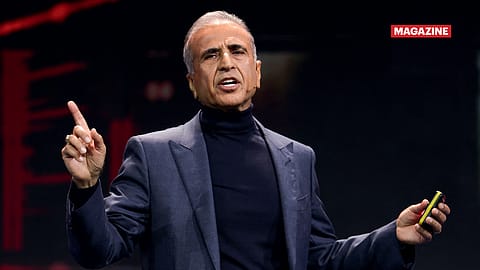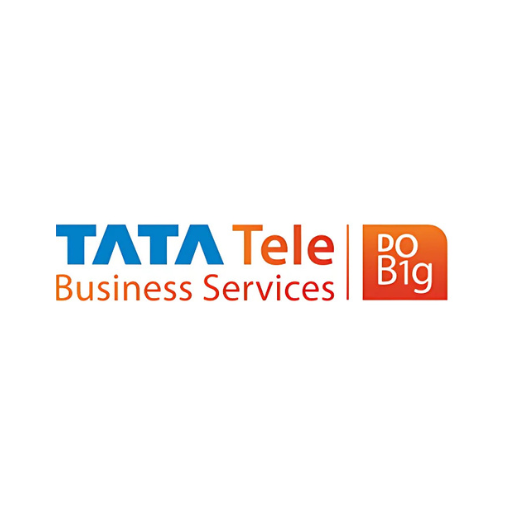India’s Top 100 Billionaires: Here’s how Airtel’s Sunil Mittal became this year’s biggest wealth gainer
With sharp bets on 5G and capital discipline, Sunil Mittal rang in profits, and the biggest wealth gain among India’s top 100 billionaires.

This story belongs to the Fortune India Magazine August 2025 issue.
SUNIL BHARTI MITTAL, the second son of former politician Sat Paul Mittal, has within one generation created a thriving business conglomerate, among India’s biggest. Sunil Mittal and his family — which includes brothers Rakesh and Rajan — has been ranked the fourth-richest with a wealth of ₹3,15,310 crore ($36.77 billion) as on June 30, 2025, according to the 2025 Fortune India-Waterfield Advisors study of India’s Top 100 Billionaires.
In a year where many of the rich have seen their net worth erode due to a variety of reasons, Sunil Mittal stands tall with the largest increase in wealth at ₹84,134 crore ($9.23 billion). On May 27 last year, Bharti Airtel became India’s first, first-generation enterprise to hit a market capitalisation of $100 billion. As of July 31, 2025, it was valued at $124 billion, the fourth-highest after RIL, HDFC Bank and Tata Consultancy Services. It is also the world’s sixth most-valued telecommunications firm after T-Mobile US, China Mobile, AT&T, Verizon and Deutsche Telecom, according to financial data website CompaniesMarketCap.com.
The right call
Many things have gone right for Mittal over the past year. Airtel has over 556 million mobile subscribers across 15 countries — 390 million in India and 166 million across 14 African nations, as on May 2025, according to Telecom Regulatory Authority of India (Trai) data. It is also present in Bangladesh and Sri Lanka through associate entities. After the last tariff hike in July 2024, Airtel reported the highest average revenue per user (ARPU) of ₹245 (Q3 and Q4, FY25) among domestic telcos, compared with ₹209 in Q4FY24. In sharp contrast, Reliance Jio’s ARPU was around ₹206, while Vodafone Idea had been languishing at ₹175 (Q4FY25).
Airtel’s higher ARPU is driven by its strength in the postpaid segment, where it has 25.9 million subscribers. The company’s focus on premium services, including its partnership with Apple, is expected to boost customer retention and ARPU growth further, according to Goldman Sachs. The deal will reportedly offer Apple TV+ and Apple music to Airtel’s Wi-Fi and postpaid customers.
Meanwhile, the telco’s consolidated domestic capex stood at ₹30,300 crore in FY25, lower than ₹33,300 crore in FY24. It is expected to moderate further in FY26, following the 5G roll-out. Airtel has over 120 million 5G subscribers. It has also pre-paid ₹5,985 crore in dues to the Department of Telecommunications (DoT) for high-cost spectrum acquired in the 2024 auctions. In the process, the debt equity ratio declined to 1.88 in FY25, from 2.63 in FY24.
All these have led to a strong balance sheet, which, in turn, added to the market cap. In fact, in February, Goldman Sachs raised its target price on Airtel, citing higher free-cash flow generation, strong earnings visibility, and the consolidation of Indus Towers. Other brokerages, including Jefferies and CLSA, have also cited a bullish outlook for the company. In March, Airtel shareholders approved the sale of the company’s passive infrastructure business, including mobile and wireless communication towers, to subsidiary Indus Towers.
More Stories from this Issue
Early life
An 18-year-old Mittal started his entrepreneurial journey in 1976 by selling bicycle parts. He tried his hand in multiple businesses, but with little success. His passion for telecom was triggered when he discovered push-button phones while on a trip to Taiwan, at a time when push-button phones had begun replacing rotary telephone instruments in India. In 1994, he bagged the licence for mobile telecom services in Delhi and Himachal Pradesh circles. The company, which launched mobile services in Delhi in 1995, has, over the years, expanded to cover all 23 telecom circles in the country.
Mittal went global in 2010, when Bharti Airtel acquired the African business of Zain Telecom for $10.7 billion, making it the largest-ever takeover by an Indian telco. After Africa, the focus shifted to Europe. And now, the 67-year-old Mittal is getting into satellite communications with Eutelsat OneWeb (Eutelsat Group) where Bharti Enterprises has emerged as the largest stakeholder with a 21.2% stake. It competes with Elon Musk’s Starlink and Amazon’s Kuiper. Starlink has since got approval to launch services in India. Meanwhile, Bharti Global, the international investment arm of Bharti Enterprises, acquired a 24.5% stake in British Telecom (BT) in 2024. It’s a flip from 1997-2001, when BT held a 21% stake in Mittal’s firm.
Down, but not out
(INR CR)
It’s quite a lot of action for a company that was in deep trouble after Reliance Jio launched nationwide mobile services with free voice and low data rates in September 2016. But then, it has never been an easy ride for Mittal. Once India’s leading mobile telecom services provider, Airtel was overtaken by the merged Vodafone-Idea in October 2018. And now, as of end-May 2025, Reliance Jio is the market leader with 475 million subscribers, followed by Airtel with 390 million. Together, they account for 74% of India’s current mobile subscriber base of 1.17 billion.
Things had started to turn tough for Mittal following Jio’s launch. The then private telecom service providers — Vodafone, Idea Cellular, Aircel, Tata, Telenor, and Sistema — have either sold out or merged like Vodafone and Idea. Providing free voice services to customers nationwide was the need of the hour back then. At that time, voice accounted for 73% of operator revenues. Thanks to the launch of Jio, the revenue stream disappeared almost overnight as voice services became free. By March 2018, Airtel’s Ebitda had come crashing down. That’s when the first losses hit. Mittal sought a meeting with Prime Minister Narendra Modi, who convinced him to fight the market, assuring him that the government will do what is good for the country, without taking sides. That was the turning point.
But then, being among India’s most successful business entities is nothing new for Mittal and family. Twelve years ago, Sunil Mittal & family were India’s second richest after Mukesh Ambani with a wealth of ₹87,592.96 crore, according to reports. The value has since close to quadrupled to ₹3,15,310 crore this year. In many ways, Mittal has always been way ahead of his time. In 1999, long before private equity (PE) became a thing for Indian startups, New York-based Warburg Pincus acquired a 19% stake in Bharti Tele-Ventures, which was renamed Bharti Airtel in 2006. Warburg stayed through Airtel’s 2002 IPO, and reportedly exited with sixfold returns. Similarly, Singapore-based Singtel’s investment via its arm Pastel, made in 2000, remains intact even today, a testament to its long-term confidence in Airtel.
Mittal, the man
Mittal’s way of thinking shows up in his personal life, too. Every venture —whether broadband, mobility, or fixed line — kicks off from the Sat Paul Mittal Centre in south Delhi before moving to a formal office months later. And each time he starts something new, Mittal turns vegetarian, only going back to non-veg once the venture is up and running.
Today Mittal spends much of his time in London, where his daughter Eiesha lives with businessman-husband Sharan Pasricha, who runs lifestyle hospitality company Ennismore. Eiesha invests in luxury fashion and cosmetics. Mittal’s sons Kavin and Shravin are entrepreneurs themselves. While Kavin is the founder and CEO of Hike, a tech and internet startup, Shravin is the founder and CEO of Unbound, a technology investment company that focusses on supporting the growth of long-term enterprises.
Being in London also helps the senior Mittal drive OneWeb, the U.K.-based satellite company that Airtel invested in, in July 2020. OneWeb has since merged with Eutelsat Communications, creating the world’s second-biggest satellite operator with plans to provide broadband connectivity across the globe using 648 low-earth orbit (LEO) satellites. Such satellites offer high-speed internet access with low latency, especially in remote areas, and are used for applications such as mapping, environmental monitoring, and disaster management, and is prevalent in industries, including maritime and aviation.
While telecom has remained Mittal’s primary focus, he has ventured into other industries as well, including space communications, digital solutions, real estate (Bharti Real Estate), hospitality, life insurance (Bharti AXA Life Insurance), telecom manufacturing (Beetel Teletech), and Indus Towers that has the highest number of telecom towers in the country.
As Mittal sets his sights beyond India and Africa, the real test will be how swiftly he can establish a truly global communications footprint, competing with some of the biggest names on the world stage.





